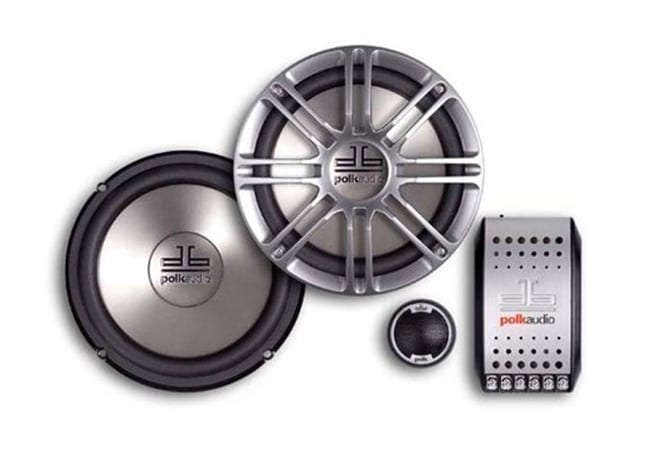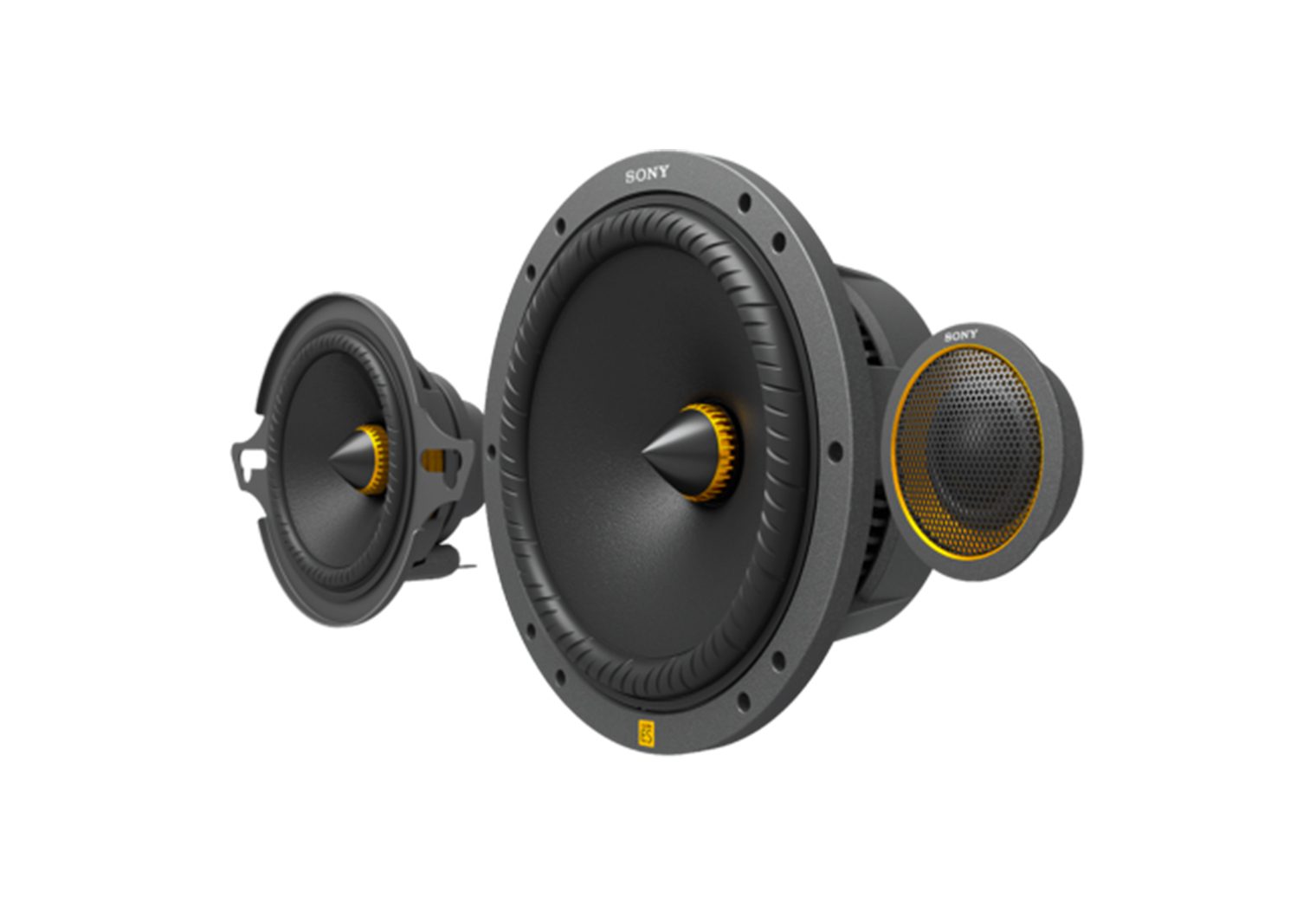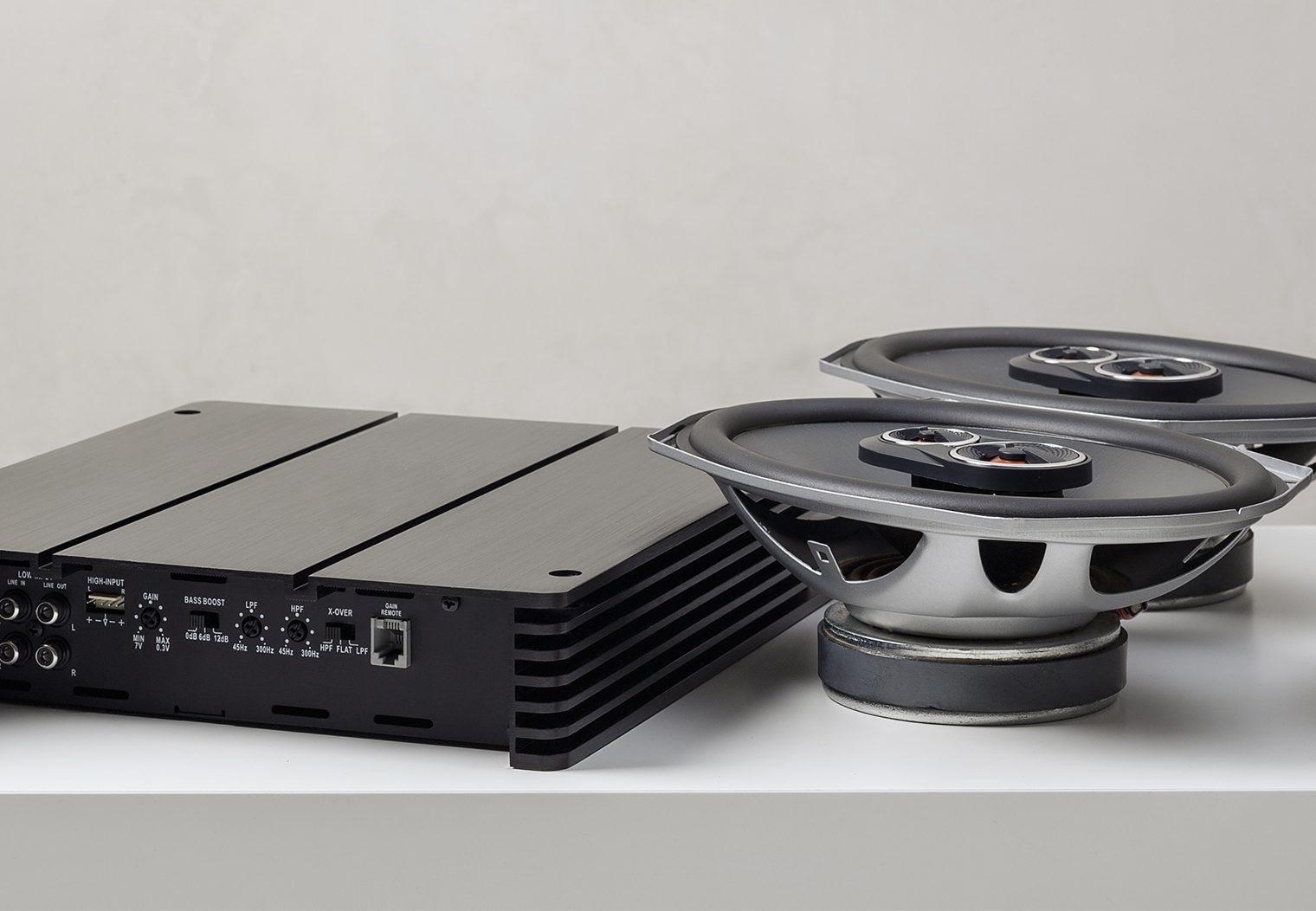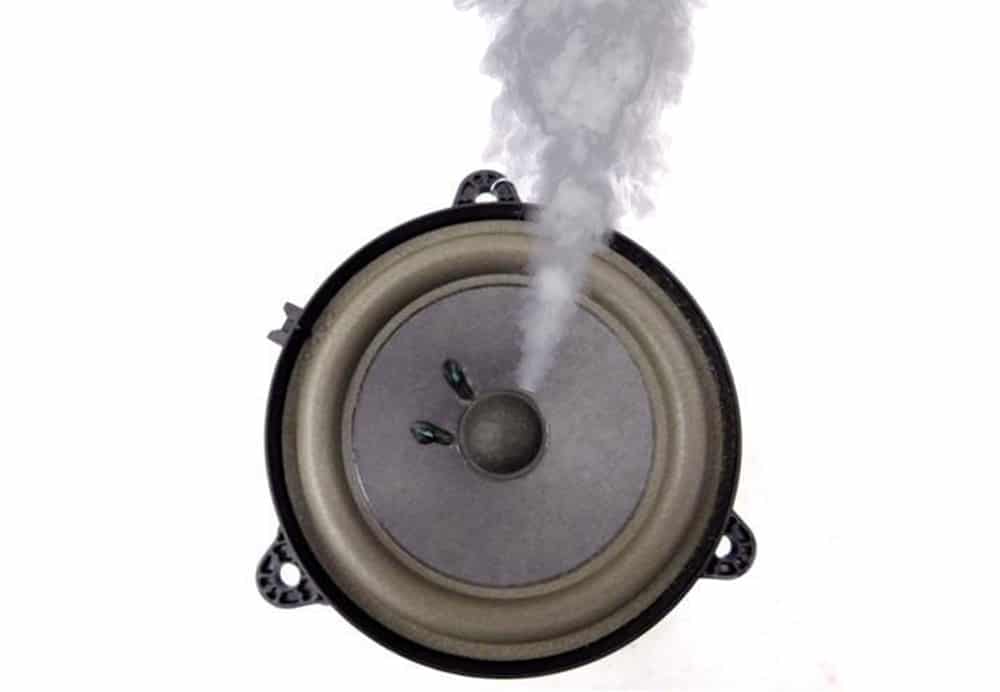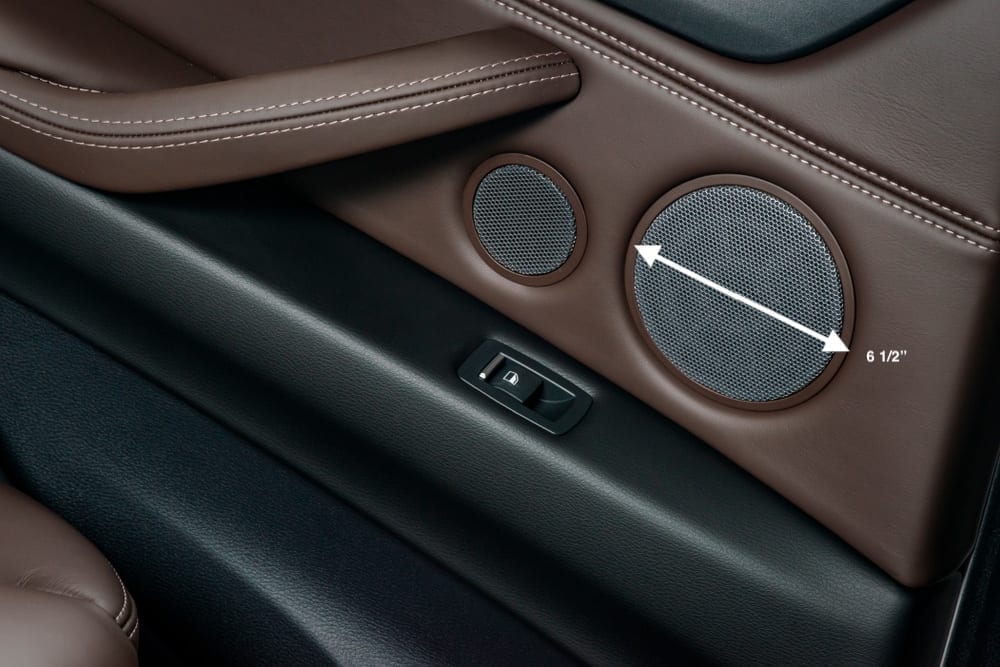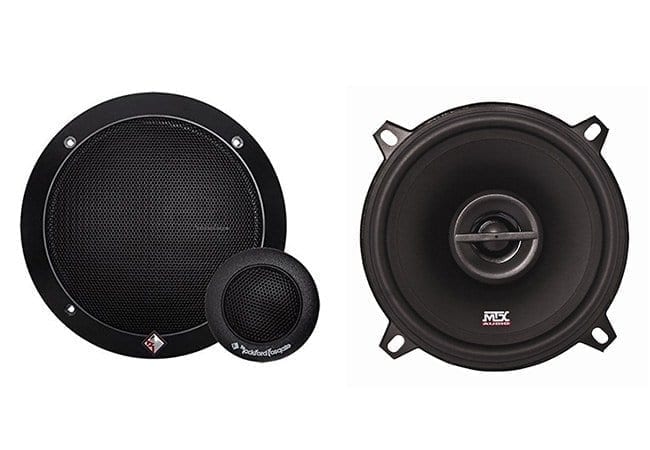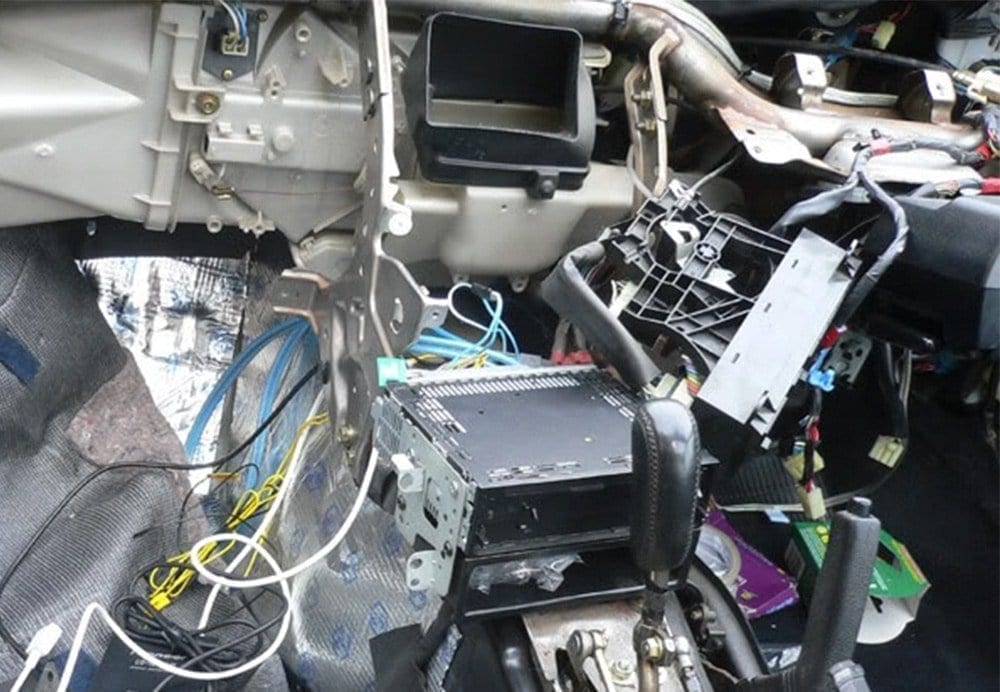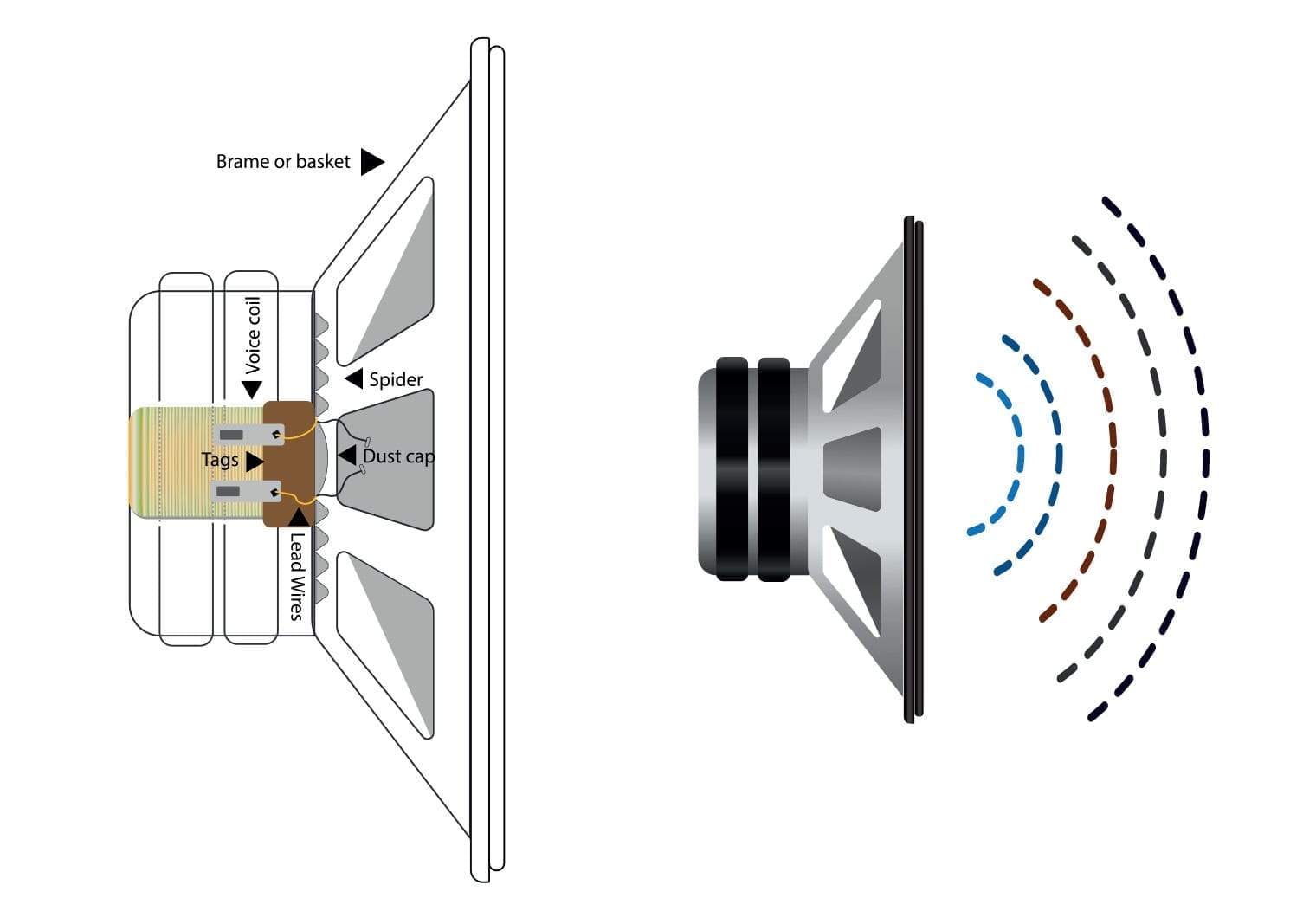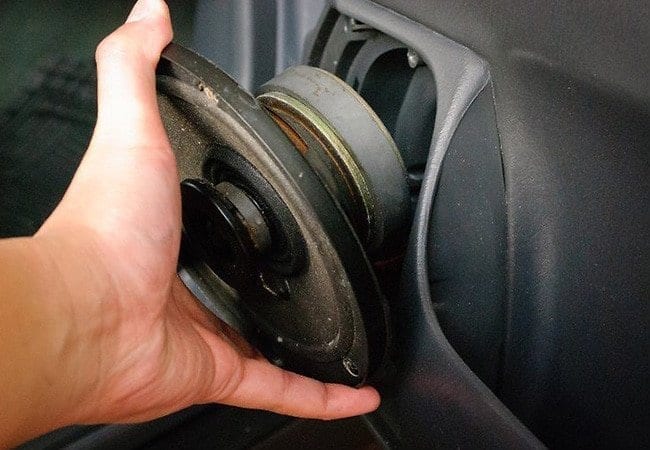Why Trust Our Opinion on Car Speakers?
CarAudioNow is an award winning automotive blog, founded and built from the ground up by car enthusiasts over a decade ago. Between our editor, Kameron, and a few selected qualified writers, we’ve installed and tested a wide variety of speakers in cars, boats, golf carts – you name it. We know our speakers, how they should sound and perform and what’s a good value for your dollar. We get our hands on every product that we test in person – many of which are purchased and some provided by a manufacturer. It’s a combination of these tests and extensive research that lead us to our recommendations. And we’re frequently testing new speakers for our lists.
CarAudioNow and its writers don’t use AI to throw regurgitated information about a few car speakers on a list and say they’re “the best” either. We’re focused on providing meaningful lists, with accurate and useful information that will help you make an informed decision on a product. And we do this because we genuinely enjoy or highly regard the stuff we add to our lists. Our readers and our reputation are both more important to us than a quick buck or the top rank on Google – although both of those would be nice! Read more about how we choose our top lists here.
In this article: We'll review our top pick car speakers, broken down by all sizes. We'll detail each of our recommended speaker’s key features, compare specs and our opinion/experience with each speaker.
Automotive speakers come in a variety of sizes and types. A simple Google search such as “what is the best car speaker” might pull up a range of lists from several websites, some Reddit threads or forums, but only a few will actually provide you with the context that you need to determine the speaker for your vehicle and application. It's the random lists that overlook the research and decision process that you want to avoid, even if it’s the first result in Google.
When people email or reach out to us on social media asking what speaker we’d recommend for them, we immediately spin the question back around to better understand their needs. That’s just normal customer service if you walked into a stereo shop. So, before we get into our recommendations, there are a few key things we think are important for you to think through to determine what type of speaker you should be looking for. Some of these, you've likely already figured out or asked yourself. But for some it might be helpful:
- What are your goals? Are you trying to replace a blown speaker? Or are you trying to build an externally amplified system? Are you just looking to upgrade your speakers using your OEM head unit? Are you trying to get more bass?
We'll point to specific speakers in some of our lists. Some that are great for OEM upgrades for example, others that are great for bass or volume. But identifying your goal is the first step to determining the car speaker that's best for you. This will help you narrow your view. If you ARE looking to amplify your system, it’s important to note the specs of the speakers that you end up buying (RMS power handling, frequency range, etc). These should help to inform your decision when you chose a car amplifier to match your speaker (if you don’t already have one). We have a few recommendations for the best car amplifiers as well that you can look at. - What size speakers are in my vehicle? This is probably the most critical aspect here, and why we've decided to break out our buying guide by size. You can put a 6 1/2″ component speaker in a 6×9 speaker cutout with adapters but you can't do it the other way around without custom work. So, knowing the size of speaker that your vehicle has, how many and where is important. For this reason, we've also created an interactive list of vehicle speaker sizes to help you determine which size speaker you should actually be looking for.
- How much do you want to spend? Clearly, not everyone wants to spend $350+ on a single pair of speakers. Even though the options on this list may seem pricy, you can drill into each individual speaker list to see more options that may be more affordable. You get what you pay for though.
This isn't by any means a comprehensive list of things to consider, but at least you can start to see how we think about the process of choosing a speaker, and why a simple search for something like ‘the best affordable car speaker' might be misleading and result in a choice that really doesn't do you any good.
So before looking at this list, start by identifying the size of speaker that you're trying to replace or upgrade in your car. This list will represent our top picks for each size category, but also will provide a link to an expanded list for each size if you want to see more options. Hopefully, by structuring our list this way, you'll not only find a relevant speaker based on your goals, size and budget, you'll find an option that fits your needs.
Here Are Our Top Pick Car Speakers of 2024 by Size
Recent Reviews & Articles
Best 5 1/4″ Component Car Speaker
>>> See our full list of 5 1/4″ Component Car Speakers <<<
5 1/4″ car speakers are a popular choice due to their compact size and versatility. They’re commonly installed in the front door panels or in the dash across a variety vehicles, making them ideal for delivering clear midrange frequencies to drivers and passengers. While they may not produce deep bass by themself, their ease of installation, price point and ability to enhance the overall soundstage alongside some of the larger speaker sizes and subwoofers make them a valuable choice if you’re unable to step it up to a 6 ½”. Here is our top choice for the 5 ¼” speaker size.
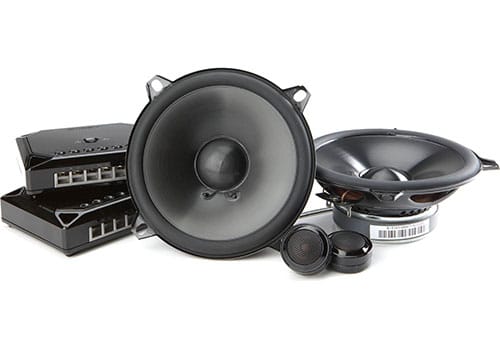
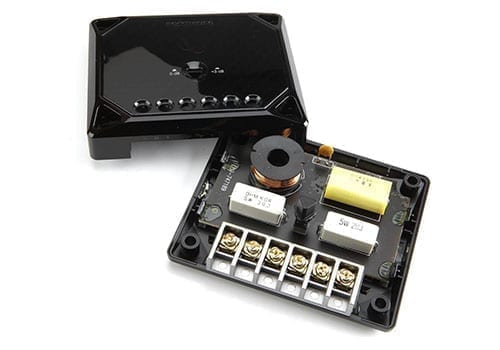
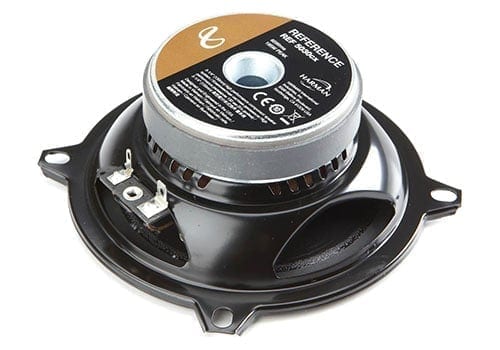
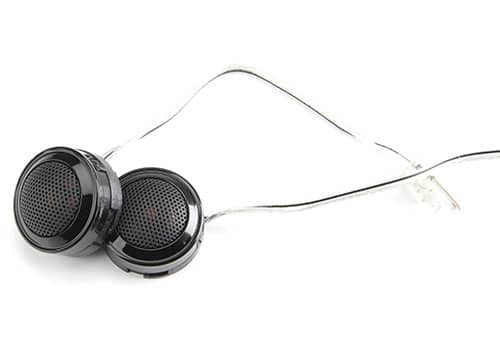
Images from infinityspeakers.com
Infinity Reference 5030cx
Why We Picked It
Originally introduced in 2019, the 5030cx is still our reigning top pick 5 ¼ inch speaker on our list. Not only has the Reference 5030cx built a reputation for its ability to handle power with clarity and longevity, but it has also done so at a very competitive price point, which we like a lot. They’re a great choice for systems with an external car amplifier, but also a fantastic match for those just looking to use a factory or aftermarket head unit for power. Some of the core features that stood out to us, and that really make an audible difference when you listen to the speakers include:
Edge-Driven Dome Tweeters: Infinity calls their tweeter setup an edge-driven dome tweeter. The difference between traditional dome tweeters and edge-driven dome tweeters is in the design of the voice coil. Edge-driven have voice coils along the edge of the dome rather than at the center The edge-driven design can sometimes be associated with smoother and clearer treble, making every note in your music shine. We think the difference is almost marginal between a traditional and these edge-driven design, but we didn’t hear any harshness when we were testing these out.
Plus One+ Cones, the Woofer, and Surround: The Reference REF-5030CX features Infinity’s (or we should say Harman Kardon’s) Plus One+ cone tech. They have a larger surface area compared to conventional speakers, which is great for improved bass response. You’ll see a pattern with the speakers we choose on this list – we have a preference for speakers that employ this type of ‘oversized cone’ tech. The woofer material, along with the surround material, plays a pivotal role too though. The cone material is made from polypropylene, which isn’t anything too special but performs well. And the important thing to note about the surround material is that it’s made from a durable rubber material instead of a foam-based surround material.
Impressive Specs: The REF-5030CX have a respectable power handling and frequency range. With an RMS power handling of 75 watts, they’ll definitely give you volume. The frequency response is broad (67-21,000 Hz), covering a wide range of the spectrum, and the sensitivity rating (93 dB) ensures that these speakers are responsive to the subtleties in your music and make it a great choice for amplified and non-amplified systems alike.
Specifications:
| Make | Infinity |
| Model | Reference REF-5030cx |
| Size | 5 1/4″ Component |
| Power (RMS) | 65 watts |
| Power (Peak) | 195 watts |
| Frequency Response | 67 – 21,000 Hz |
| Sensitivity | 93 dB |
Reasons to Buy
- Good choice for factory location replacements
- Durable speaker with a reputation for taking abuse beyond its limits
- Crystal clear mid and high range
Reasons Not to Buy
- Limited Low-Range Frequency limits
- Use of an amplifier is recommended to get the best sound
- They do not come with grills
Best 5×7 Car Speaker
>>> See our full list of 5×7 Car Speakers <<<
5×7 speakers are a less common, but versatile choice that are commonly used in various car models from the factory. This includes many Fords, Mazdas, and others. 5×7 speakers provide a well-rounded audio experience, especially mid-range frequencies. They’re somewhere in between a 5.25” and 6×9” in terms of bass. In many cases, a 6×8 speaker also can be leveraged in a 5×7” opening. If feasible, we’d recommend a 6×8 over a 5×7 but here is our top 5×7 pick nonetheless!
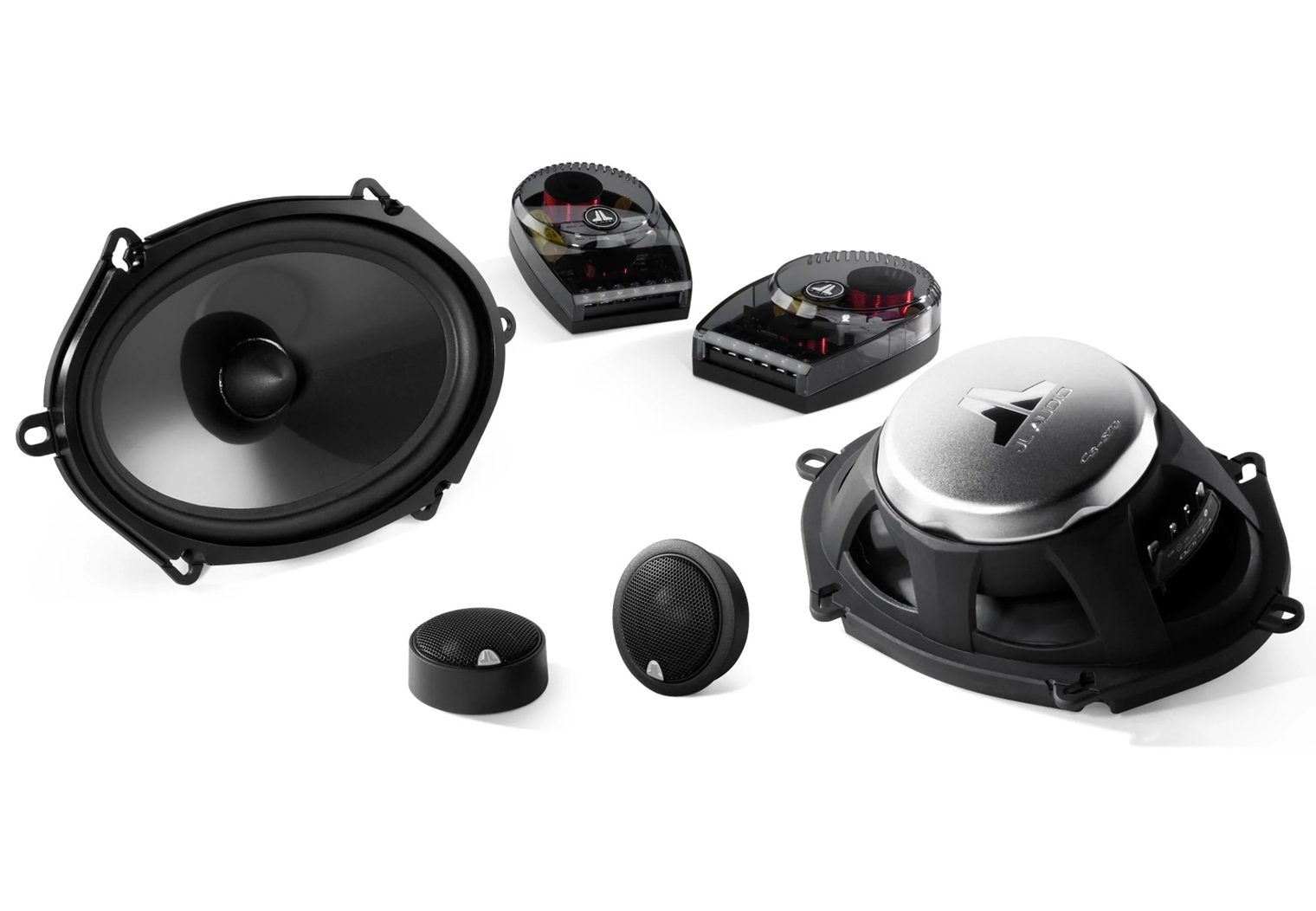
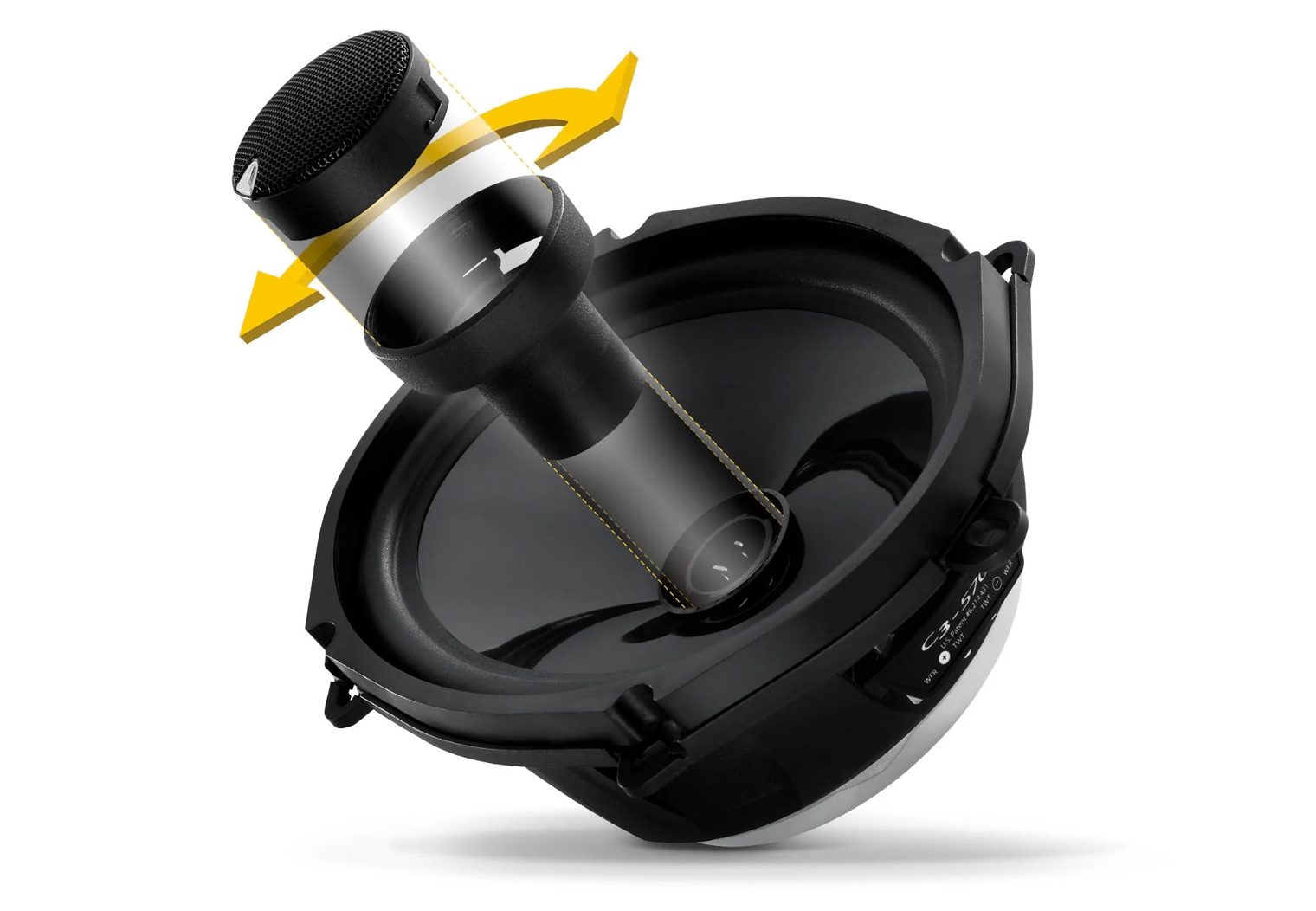
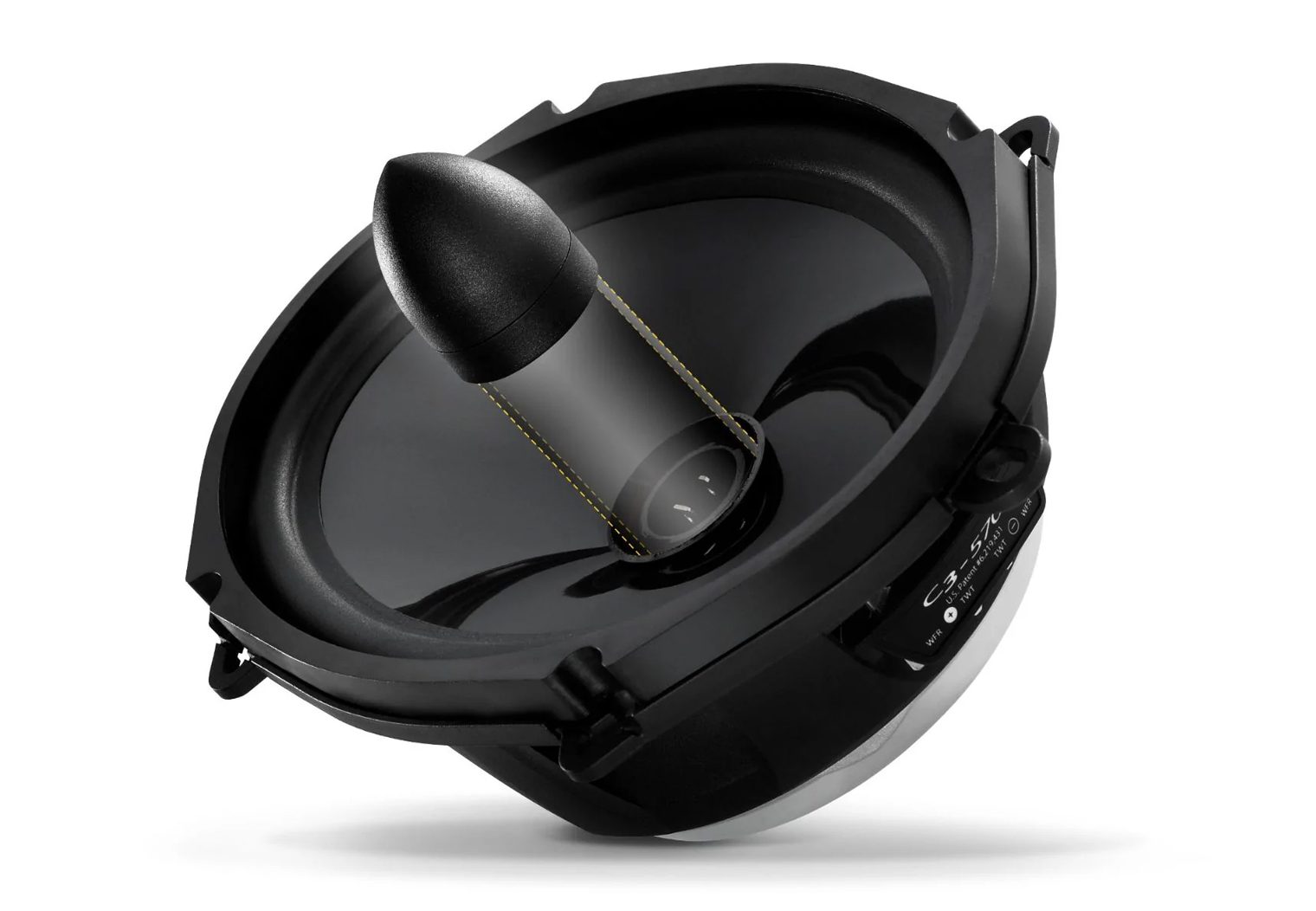
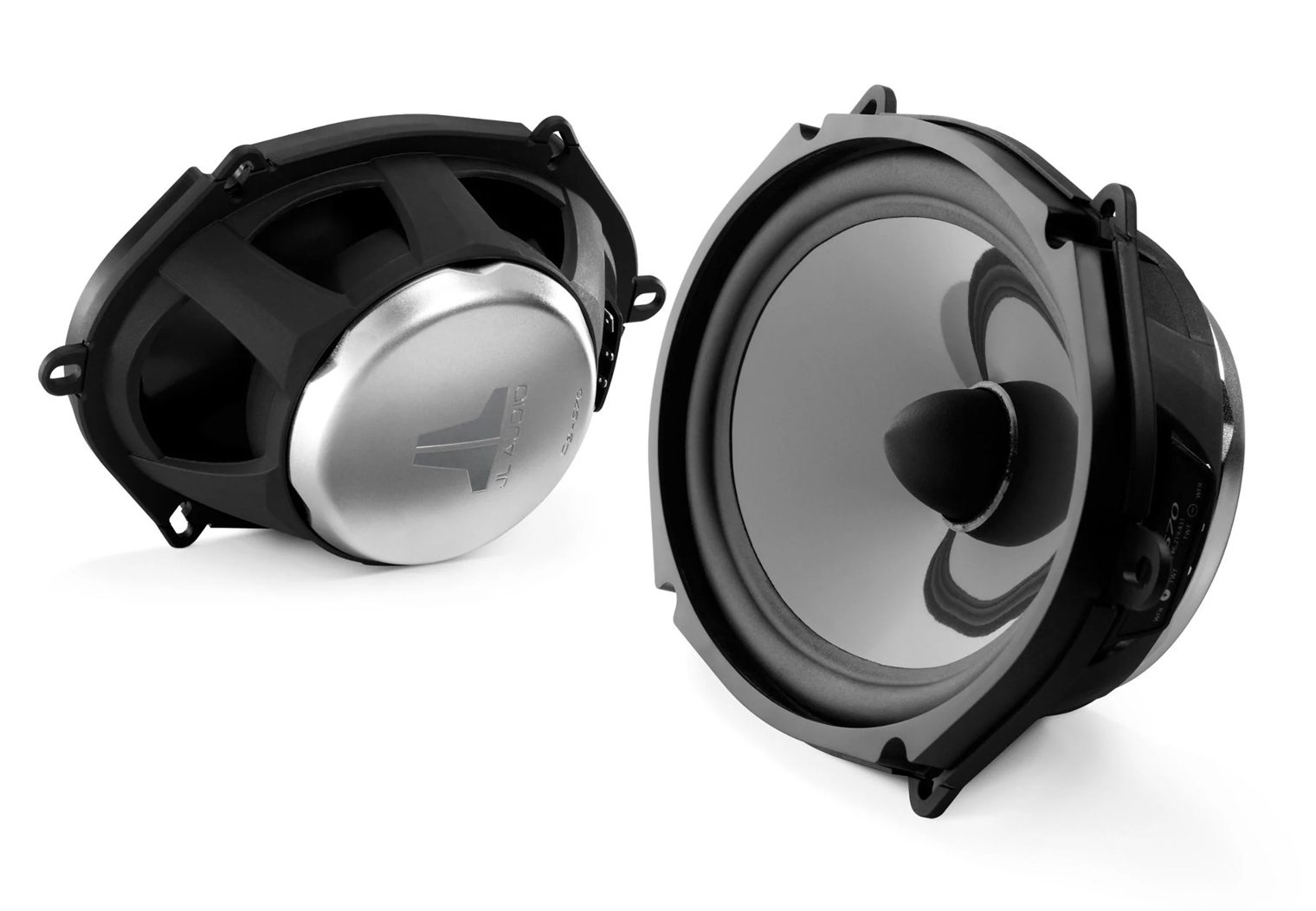
JL Audio C3-570X
Why We Picked It
We certainly wouldn’t consider this package a budget-friendly option, but it's all about getting your money's worth when it comes to performance, right? JL Audio’s C3 speakers have several cool features that stand out to us, and that you don’t see on any other competitor’s speakers. Apart from performance, their dedication to R&D and creativity is probably the thing we love most about the JL brand and their products. It’s what makes them such a powerhouse in the industry, and why their products have become more and more synonymous with quality and performance. Let’s talk about why we think these speakers belong on our list.
Mica-Filled Polypropylene Woofer and Butyl Rubber Surround: You’ll see us call this out in all of our speaker reviews, but the cone and surround material are incredibly important components and have a profound impact on the sound and speaker durability, longevity and performance. The C3 speakers use a mica-filled polypropylene woofer cone, a material that brings together excellent rigidity and vibration dampening. But what does this mean for your music? The reason manufacturers test and use complex combinations of materials for their cones is to improve clarity and precision – especially in the midrange frequencies. And that’s what JL does with this Mica-Polypropylene blend.
The surrounding is butyl rubber, or what we think is sort of the gold standard for higher-end speakers. Besides the voice coil, the surround is probably one of the most common points of failure on a speaker. Butyl rubber is designed to last, ensuring that your investment in the C3-570 is a long-term one.
Glass Filled Polymer Frame and Frame Cooling: The C3-570 is housed in a glass-filled polymer frame. It’s kind of like a fiberglass reinforced plastic material. It’s rigid, which is what matters. But what's more important to us is JL’s integrated frame cooling system. It’s not just about aesthetics; it's about performance under heavy load for long periods of time. It keeps the speakers cool even during your longest playlists, and ensures they maintain their exceptional performance, song after song.
Silk Dome Tweeters and Convertible Design: Here’s our personal favorite feature – the convertible tweeter design. Up front, you can see a silk dome tweeter. Silk dome tweeters are associated with smoother, less harsh highs than more rigid dome tweeters like aluminum or titanium. What's really neat about the speaker design is that it’s convertible – you can either install a phase plug at the center of the speaker and mount the tweeter separately for a more advanced soundstage or keep it simple and mount the tweeter directly to the speaker, making it a coaxial. The choice is yours.
Midrange and Tweeter Level Settings: The C3-570 have three midrange settings and four tweeter levels to choose from. What this allows you to do is tune the strength and levels of the mids and high frequencies separately without a DSP or crossover. By adjusting the tweeter levels and midrange settings, you can personalize your listening environment directly from the speaker/crossover which simplifies installation and tuning. You normally see 1-3 tweeter level settings but not both midrange and tweeter so this is another unique benefit that we feel is important to call out.Impressive Specs: One thing we’ve always noticed with JL Audio is their conservative power handling specs. The C3-570s only have a 75 watt RMS handling rating. But we’ve listened to them and they’re comparable to higher power handling speakers. Their frequency response of 48-25,000 Hz is also impressive, especially on the lower range.
Specifications:
| Make | JL Audio |
| Model | C5-570X |
| Size | 5×7″ Coaxial |
| Power (RMS) | 75 watts |
| Power (Peak) | 225 watts |
| Frequency Response | 48 – 25,000 Hz |
| Sensitivity | 90.5 dB |
Reasons to Buy
- Excellent sound quality, particularly in midrange frequencies
- No distortion or buzzing even at high volumes
- Included crossovers are high-quality and compact
Reasons Not to Buy
- Expensive way to replace your speakers
- Works best when provided additional amplification
- Requires wiring of a separate crossover
Best 6 1/2″ Car Speaker
6 ½” speakers are overwhelmingly the most common size on the market and sold by manufacturers. They offer a great blend of bass, midrange, and highs and are arguably the best choice among all the sizes on our list. Many installers will actually adapt the other speaker sizes on our list to a 6 ½” speaker if they can – even 6x9s. They’re the most universal size on the market with the best overall performance (in our opinion). And our opinion is validated by the fact that almost EVERY speaker line from any manufacturer will include them. Whereas 5x7s or 6x8s are sometimes hard to come by!
Being so popular and universal, we’ve created a few other lists of 6 ½” speakers, such as:
- Best 6 ½” Component Car Speakers
- Best 6 ½” Coaxial Car Speakers
- Best Budget 6 ½” Car Speakers
- Best High-End 6 ½” Car Speakers
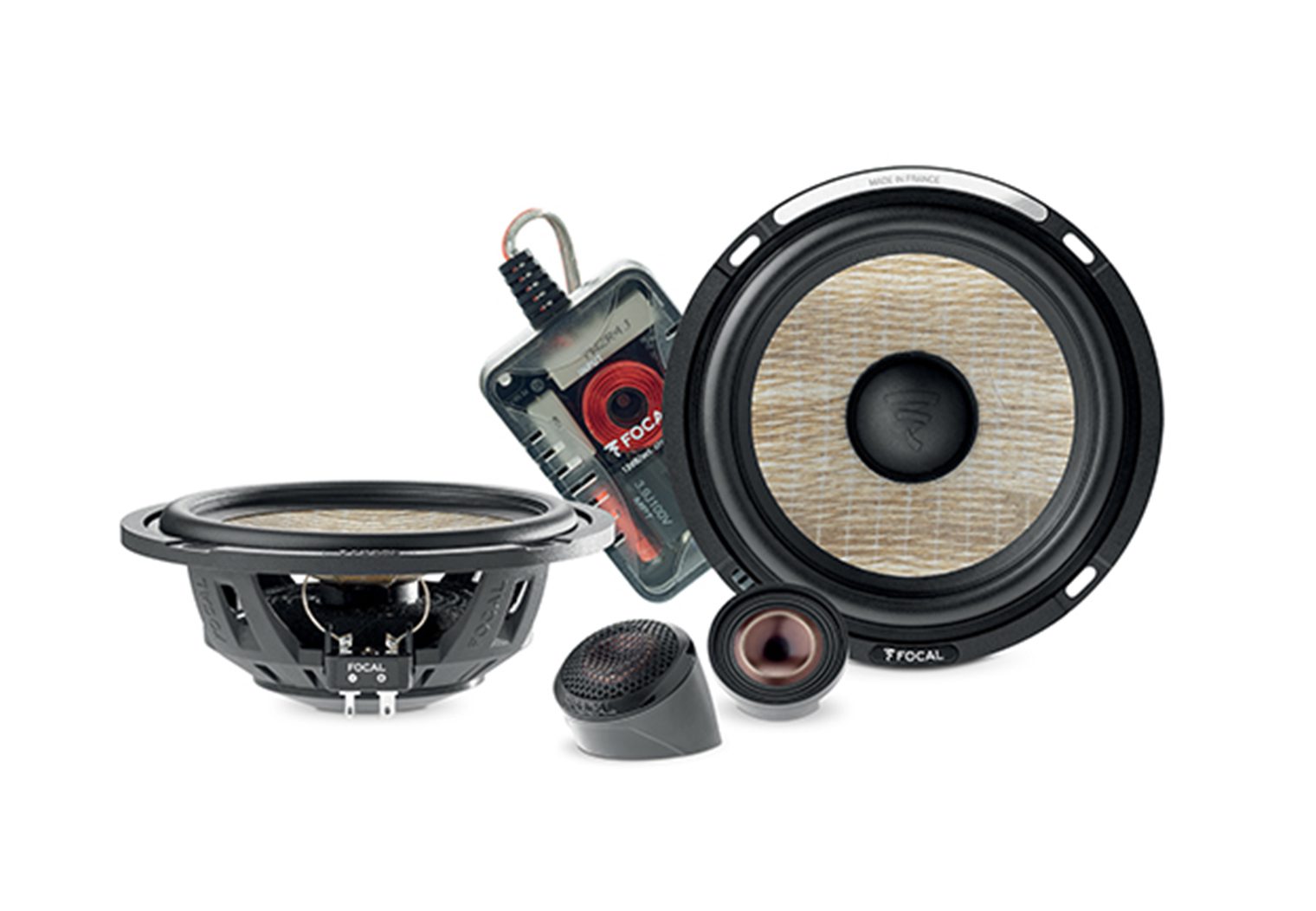
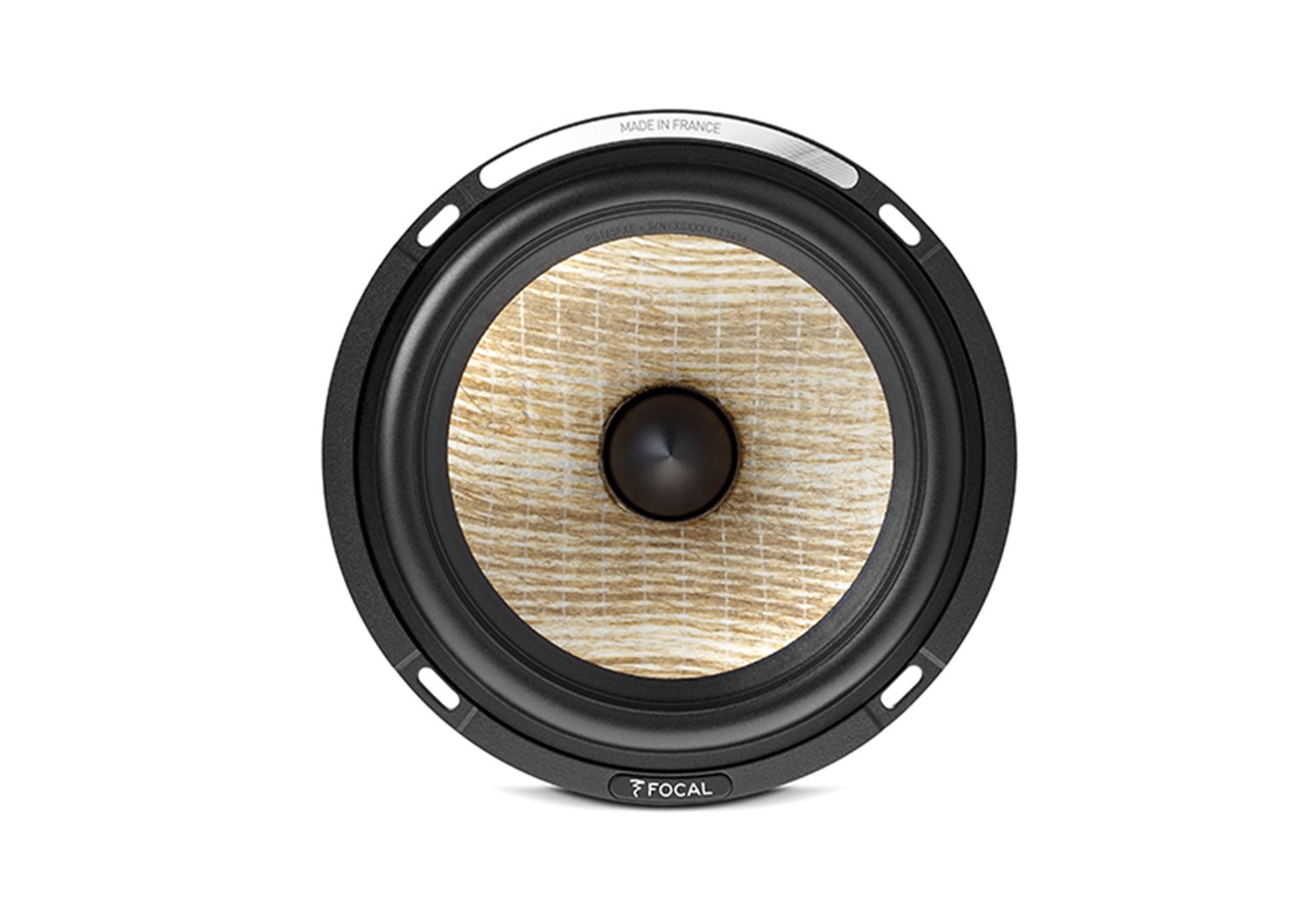
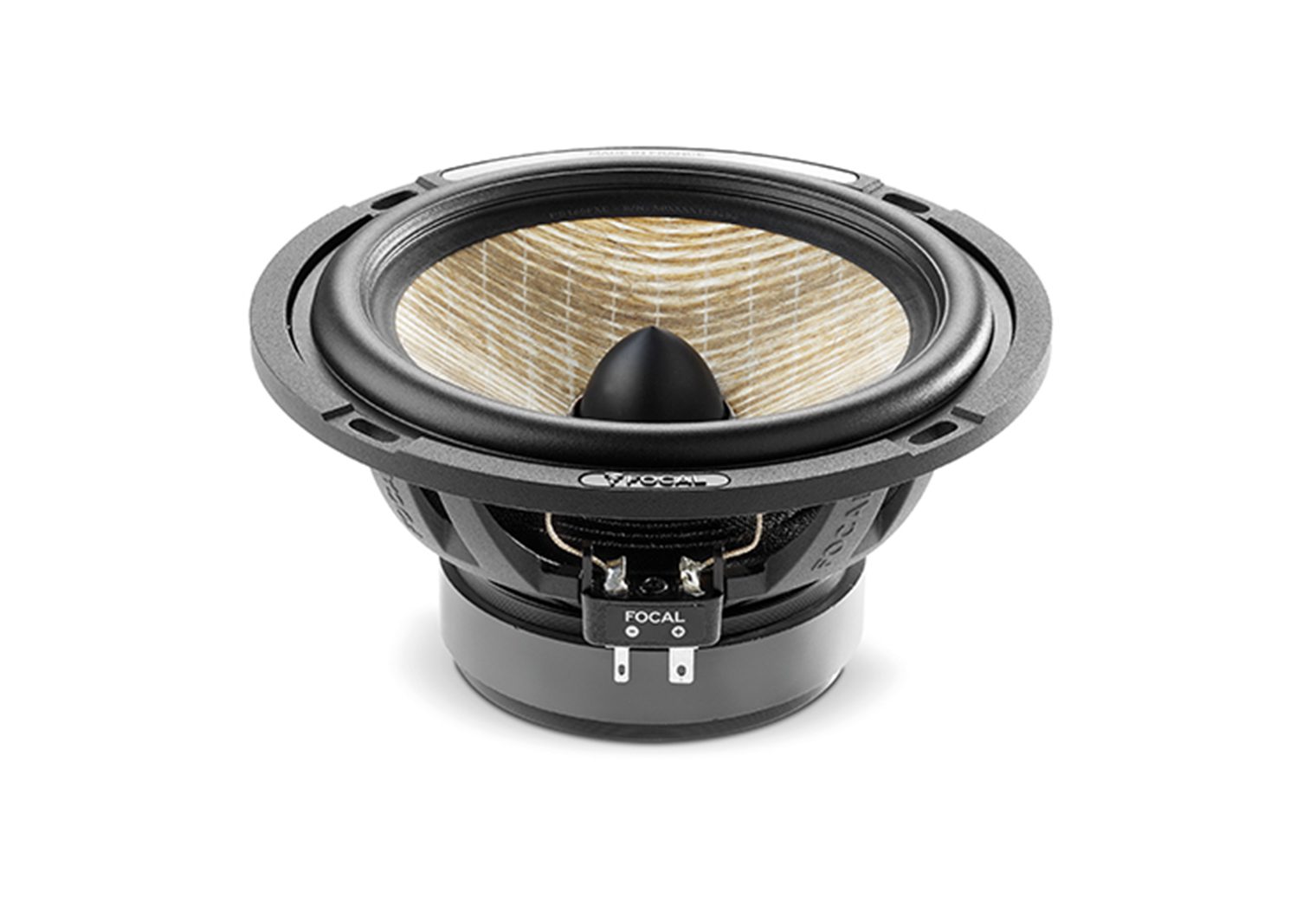
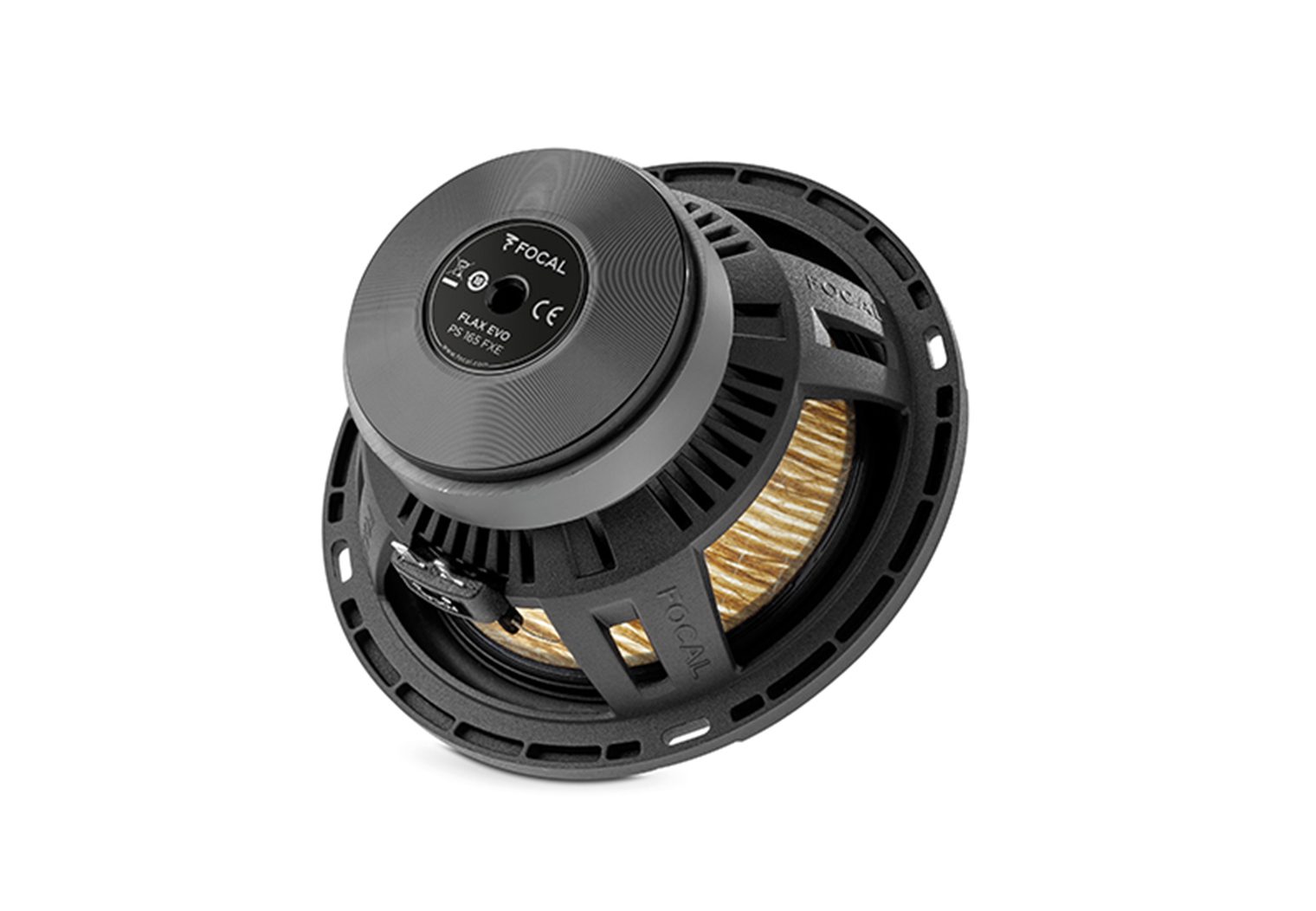
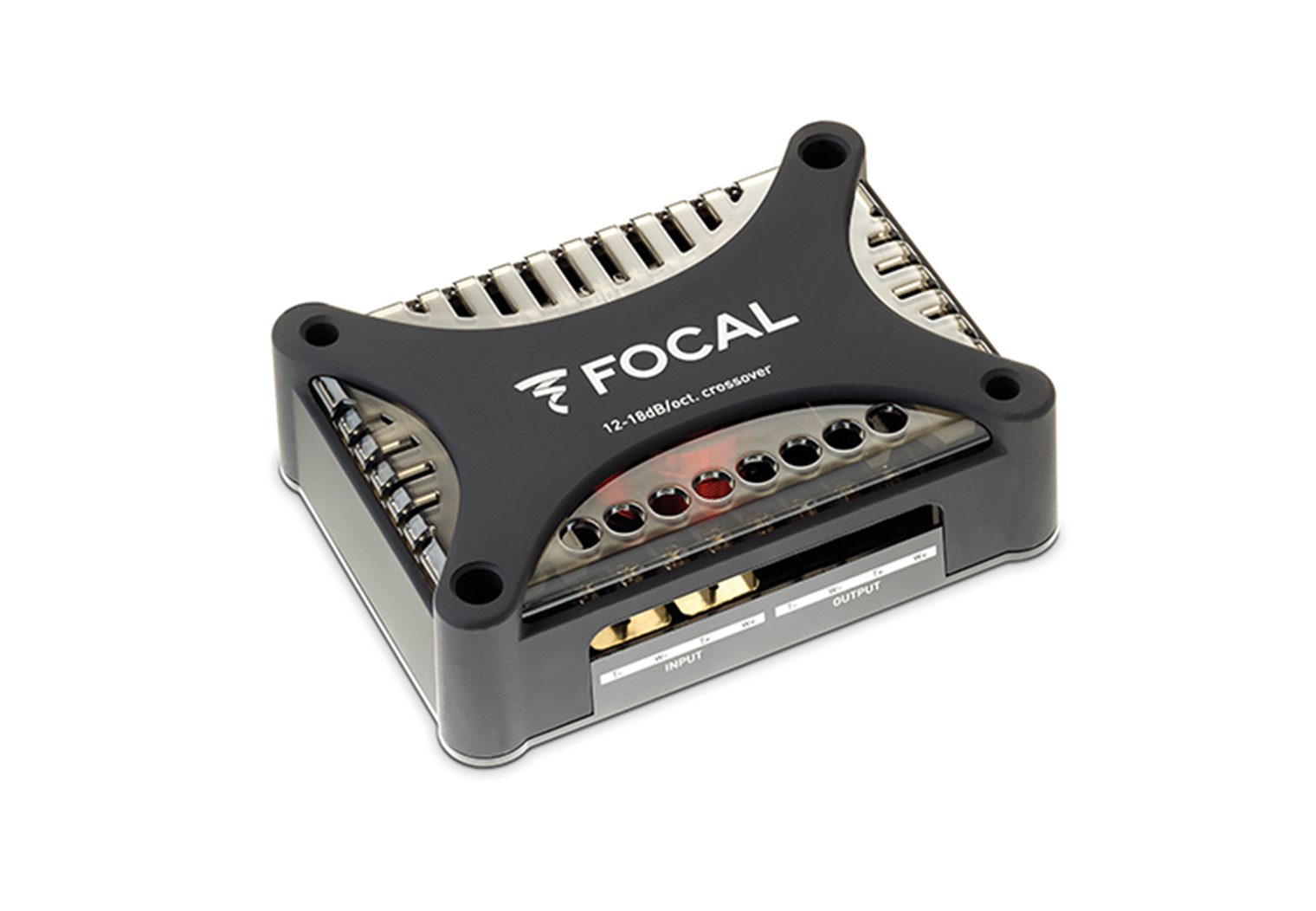
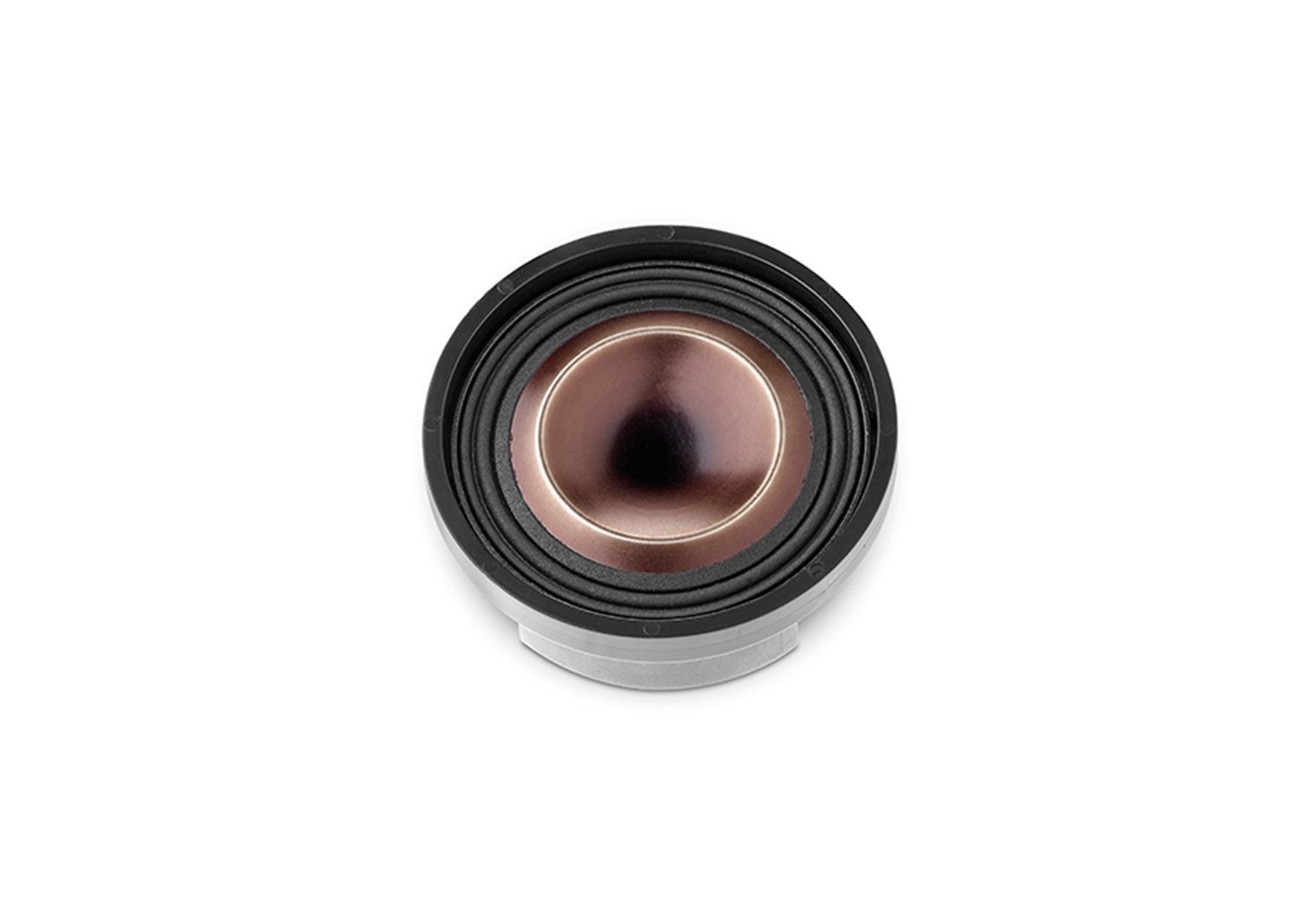
Focal PS 165 FXE
Focal PS 165 FXE Video Review
Join us for an exclusive unbox and first look at the Focal PS 165 FXE speakers in our latest video. We'll walk through the key features that make this speaker a great choice.
Why We Picked It
Focal is serious about creating high-fidelity sound in the automotive marketplace. Their newest 6.5-inch component set is the PS 165 FXE, which incorporates the French company's iconic use of flax fibers and some of the highest-end technology in the business to produce an incredible sounding component speakers in the world. We know these have a high price tag, but it's for a reason. Ask anyone in the stereo industry – home and automotive – and they'll know Focal. We did a first look and feature overview of this the PS 165 FXE and loved what we saw and heard. Here are a few things that stand out about these Focals.
Flax Woofer Cone and TMD Surround: The woofer cone is made of a sandwiched flax fiber core with glass layers. Flax is a highly rigid, lightweight, and hollow material that allows these speakers to be among the most rigid and responsive with very low harmonic distortion. It’s one of the features that’s unique to Focal’s lineup of speakers, including the PS 165 FXE. Focal says that the unique properties of flax give the speaker the ability to produce a more natural sound with rich midrange and clear bass.
The cone surround is another innovative design using ‘tuned mass damper’ technology. This is the same tech used to stabilize skyscrapers in earthquake-prone areas, so it is more than capable of handling all kinds of abuse without fail. The combination of a rigid cone and a balanced surround provide excellent response and a pure sound.
TAM Tweeters: Focal uses a unique “M” profile tweeter that offers a wide diffusion area. In other words, you don’t have to be as precise when trying to directionally install them to still benefit from a directional speaker. The angle-mount tweeters are easy to install and are specifically designed to provide off-axis listening typical of an in-car environment. The inverted dome design allows for harmonic balance and clean treble.
Crossover Network: The bi-amplified design of these speakers allows you to configure your setup to take full advantage of the high-quality crossovers included in the kit. The crossovers direct the proper frequencies to the proper speakers, so you don’t have overlap and wasted energy when a speaker attempts to recreate a frequency that it can’t.
Power Handling and Frequency Response: Focal rates these components at an RMS of 80 watts and a peak of 160 watts. The bi-amp design performs best when power is amplified. The aluminum and magnesium frame stabilizes and balances the speaker to prevent distortion.
Specifications:
| Make | Focal |
| Model | PS 165 FXE |
| Size | 6.5″ Component |
| Power (RMS) | 80 watts |
| Power (Peak) | 160 watts |
| Frequency Response | 55 – 28,000 Hz |
| Sensitivity | 90.5 dB |
Reasons to Buy
- Excellent warm and natural sound with clear midrange
- High-end look that is hard to cover up with a grill
- Made from only high-quality materials
Reasons Not to Buy
- Difficult to fit in some locations due to larger-than-standard cutout size
Best 6×8 Car Speaker
>>> See our full list of 6×8″ Car Speakers <<<
6×8 sized speakers are another common speaker size from the factory. Although they seem to be fading out in popularity like the 5x7s a little bit. They offer a fantastic blend of bass, midrange, and high frequencies. Like the 5×7, 6x8s are commonly compatible in most Fords, Mazdas, Lincolns and many others. They might not cover the mid-range/highs quite as well as a 6 ½” but their bass and low range is superior in many cases. And most of the time, 6×8 and 5x7in sizes are interchangeable too so if you have a 5×7 speaker today, our recommendation would be to replace it with a 6×8 if possible.
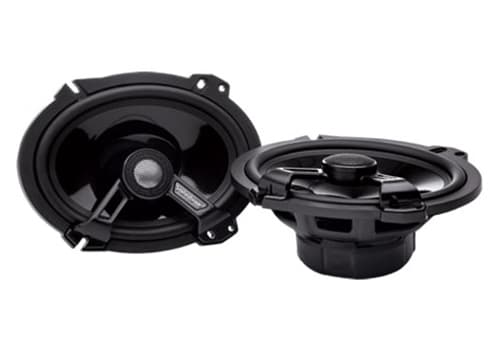
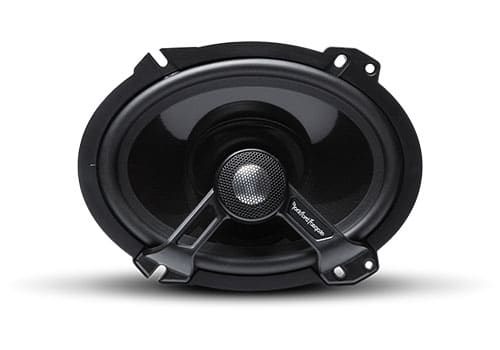
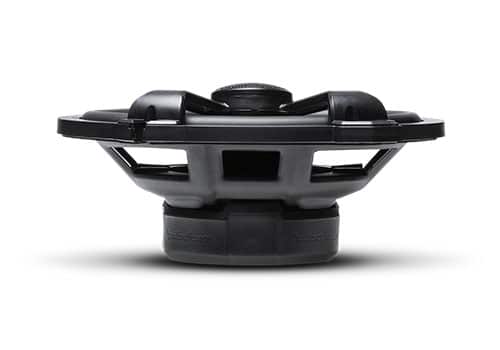
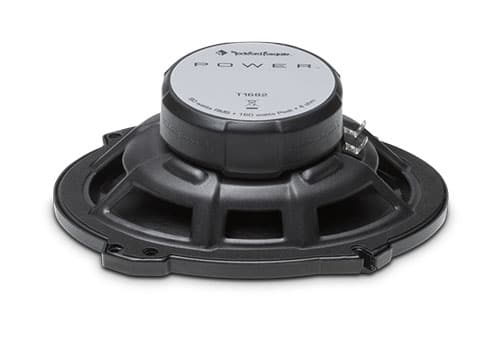
Rockford Fosgate Power T1682
Why We Picked It
Rockford’s T1682 is a powerhouse 6×8. They combine cutting-edge tech and robust construction for an exceptional listening experience. Here's a closer look at some of the technology and features that make these speakers stand out to us, and sound so good.
VAST Technology: Rockford’s VAST (Vertical Attach Surround Technique) technology optimizes cone space, allowing for a larger cone to fit in the same size basket. Larger cones enable the speaker to produce bass more efficiently and increase their power handling. So if you were to compare the frequency coverage of this speaker against one with a traditional cone design you’d hear an audible difference in volume and, in particular, the lows.
Woofer and Surround Material: The cone material is where the magic happens, and how a lot of manufacturers differentiate themselves. The T1682’s cone is crafted from a blend of carbon fiber and polypropylene, and what we appreciate most is the balance it strikes. The rigidity the material ensures powerful bass, while the lightweight nature of carbon fiber maintains clarity in the midrange.
The cone is surrounded by butyl rubber, which is common among the higher-end speakers. Butyl rubber is associated with longevity and overall performance so it’s a good thing to see when you’re comparing speakers.
Frame Engineering: Another small feature we wanted to point out is the open mounting slots in the frame. If you look closely at the mounting holes in the photos, you’ll notice two are open. This is to help with mounting, especially when the holes don’t line up perfectly. In our experience, these come in handy more than you would think and shave some time off of the installation.
1″ Dome Tweeter – Adding Clarity: At the center of the speaker, you have a suspended 1″ aluminum dome tweeter. It's this tweeter that adds a layer of crispness to the music. We appreciate the attention to detail here, ensuring that even the highest notes are crystal clear. And we also like the suspension of the tweeter. In most cases, we always prefer a suspended tweeter design over a built-in because it allows the cone behind it to have more surface area and generally is one less point of failure on the speaker.
Impressive Specs: In terms of specs, the T1682 boasts a competitive peak power handling of 160 watts, an RMS of 80 watts, and a sensitivity rating of 88 dB. The frequency response, ranging from 60Hz to 22kHz, ensures a wide range of sound, accommodating all musical genres with finesse. Like most 6×8 and 6×9 sized speakers you actually get a very well-rounded sound from these speakers without a subwoofer, but if you really wanted some bass we always recommend a dedicated sub.
Key Features
| Make | Rockford Fosgate |
| Model | Power T1682 |
| Size | 6×9 Coaxial |
| Power (RMS) | 80 watts |
| Power (Peak) | 160 watts |
| Frequency Response | 55 – 22,000 Hz |
| Sensitivity | 88 dB |
Reasons to Buy
- Excellent sounding speaker with a robust midrange and clear highs
- Fits numerous factory speaker locations without modification
- On-board crossover simplifies install and results in better sounding speakers
Reasons Not to Buy
- Somewhat deep and may cause interference issues when replacing factory 5×7” speakers
- Not as much bass as might be expected from a speaker this size
Best 6×9 Car Speaker
>>> See our full list of 6×9″ Car Speakers <<<
6x9s are a great choice if you’re looking for a full-range speaker. We’ve seen these in manufacturers like Toyota, Jeep, Ram and some others and what’s noticeably different in vehicles with 6x9s is their bass coverage, even if there isn’t a subwoofer installed. This makes sense because they have the largest cone surface area among all of the other speaker sizes on our list. And as you probably already read earlier – surface area can translate into bass and volume. So if you’re looking for an excellent replacement or upgrade to a 6×9 speaker in your vehicle, here’s our top choice.
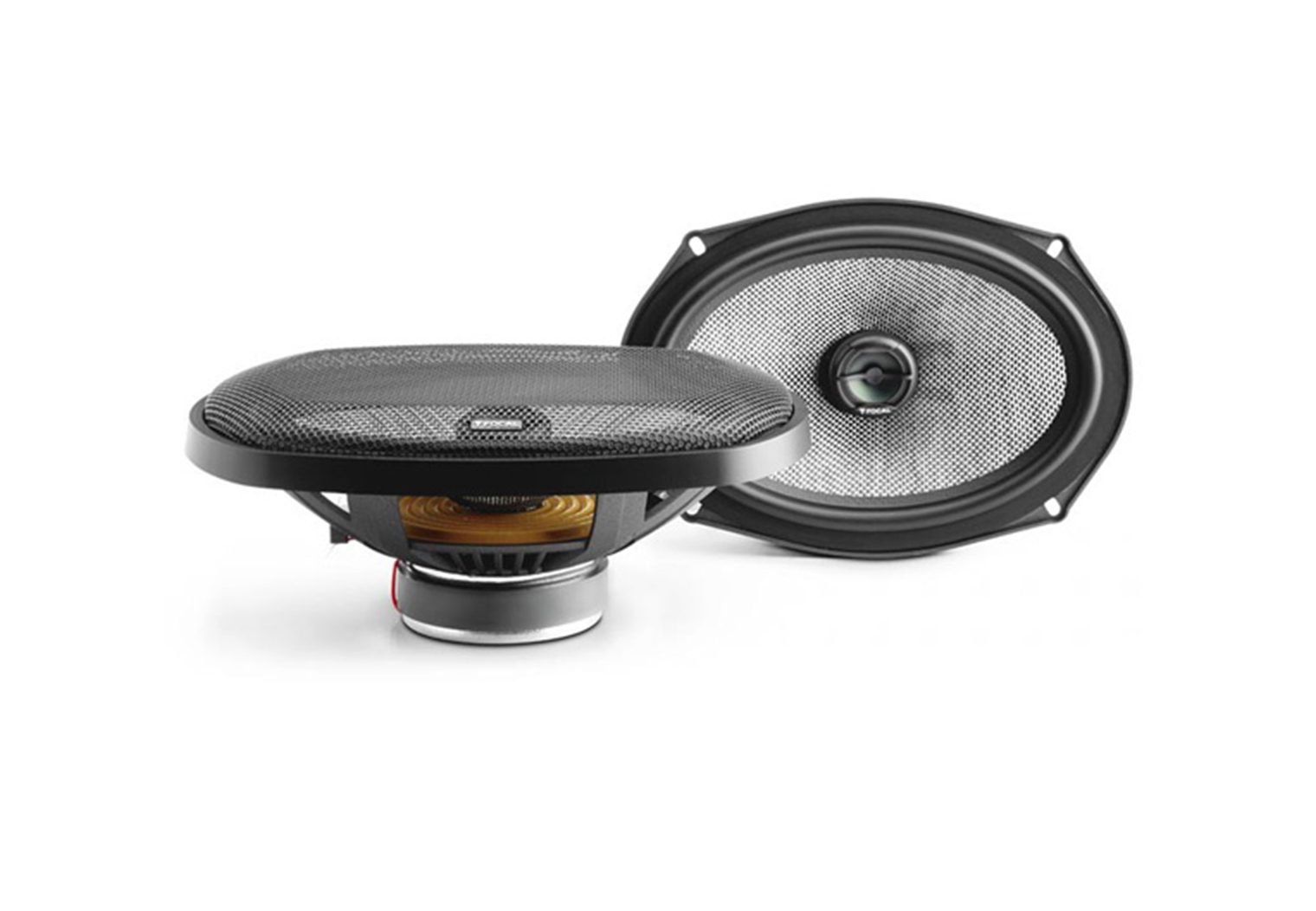
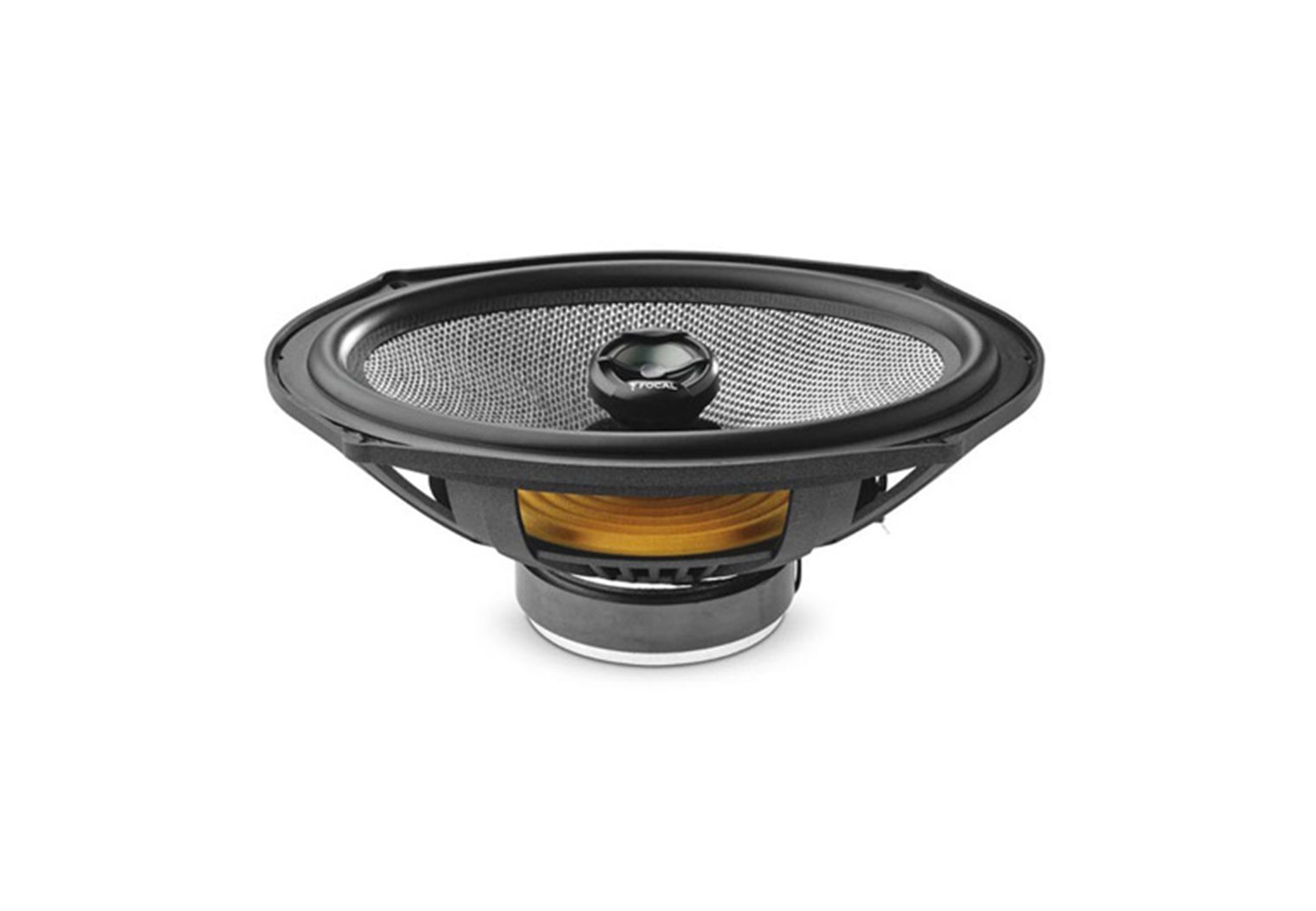
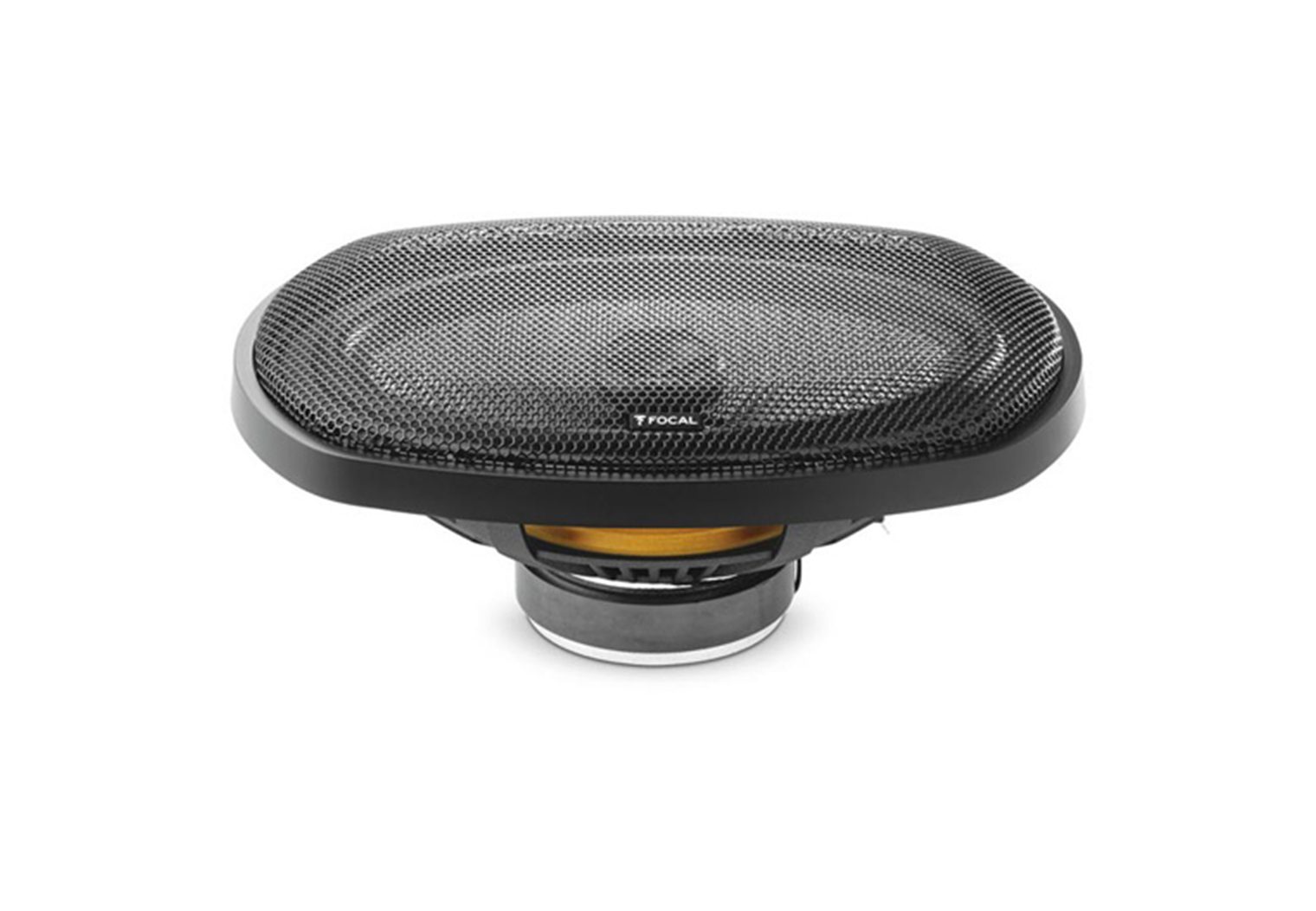
Focal Access 690AC
Why We Picked It
Another Focal option on our list (there's a trend here) is their Access 690AC. French manufacturer, Focal, is known for its great speakers but great speakers don't come cheap. We previously featured Focal's older model on our list, the Performance 690C. The newer 690AC designs use better basket geometry, materials, and some new technology as well. The 690AC is also a 2-way vs the 3-way design of the 690C so the sound and performance are totally different.
The Access series lineup offers a great blend of Focal’s technology, performance and design but at a lower price point than, for example, their performance flax speakers like the PS 165 FXE that we call out for our 6 ½” choice. It’s the combination of performance, materials and price point that put this particular speaker on the top of our list for the 6×9” category. Here are some those notable performance-impacting features that we think make the difference in the sound quality of the 690AC and why it’s featured on our recommended list.
Dual Fiberglass Woofer (DFS) Cone and Butyl Rubber Surround: Construction and material quality is a big deal, and the dual fiberglass woofer cone structure is a standout feature to us. Focal’s DFS is just a construction technique. It combines the rigidity and durability of two woven fiberglass structures with the damping and weather resistant properties of polyurethane. This unique combination ensures not only excellent bass response but also longevity. The butyl rubber surround is also a plus.
Rotating Aluminum Inverted-Dome Tweeter: Another key highlights to us is the rotating aluminum inverted-dome tweeter. This design isn’t just about looks; it plays a role in high-frequency sound dispersion. By allowing you to direct the tweeter as needed, you can customize the soundstage – a critical component to a tuned system since speaker locations vary from one car to another. When you combine this with Focal’s standout inverted-dome tweeter design, it really makes a noticeable difference in treble softness and fullness. Enough so for us to hear at least.
Resonance Resistive ABS/Fiberglass: Basket rigidity isn’t something to be overlooked. Focal’s resonance-resistive ABS/Fiberglass basket contributes to both the structural stability and the acoustic performance of these speakers. It minimizes unwanted vibrations, ensuring that the sound remains pure and uncolored.
Impressive Specs: Finally, let’s talk specs. The 690AC has a 75 watt RMS power range. But what we’ve found with some manufacturers like JL Audio and Focal is that this really isn’t always indicative of volume. We’d consider 75 on the lower end but power handling really doesn’t mean too much if you have to dial back the gain to prevent distortion. So expect every bit of volume and clarity out of the 75 watt rating with these speakers. A 50-20,000 Hz frequency range tells you enough about the bass coverage – these are pretty much full range speakers but if you want a lot of bass out of your system, still consider a separate subwoofer.
Key Features
| Make | Focal |
| Model | 690AC |
| Size | 6×9 Coaxial |
| Power (RMS) | 75 watts |
| Power (Peak) | 150 watts |
| Frequency Response | 50 – 20,000 Hz |
| Sensitivity | 88.09 dB |
Reasons to Buy
- Superb sound quality, particularly at high frequencies
- Smooth sound and nice deep bass
- Great performance at a low(er) end price
Reasons Not to Buy
- Require slightly more installation depth than most other speakers
Common Speaker Terms & Ratings – Things You Should Know About Speakers
When we’re choosing a car speaker, we take a lot into consideration. You should to! Let’s define a few common features and terms that are used when finding the ideal car speaker. Also consider taking a look at the anatomy of a car speaker.
Power Handling: Power handling is the measurement a manufacture uses to rate how much power a speaker can handle and operate at. It is given in two measurements, RMS and Peak (or MAX). RMS Power rating is the amount of power the speaker handles continuously. The Peak Power rating is the amount of power a speaker can handle in short bursts. When comparing speakers, RMS Power is the more relevant and important rating to look at.
Frequency Range: Frequency range is the frequencies that the speaker emits sound at. It's typically measured in Hz. The ranges show from a low frequency to high, for example: 20 – 22,000 (22k) Hz. This measures how low and high the speaker can emit sound at. Subwoofers, for example, typically operate below 200Hz while tweeters operate above 3-5K Hz.
Speaker Design & Materials
Woofer: The speaker woofer determines the responsiveness, and general quality of the speaker. The stiffer and more lightweight the material used, the more effective the speaker is. Polypropylene is a common material used for the cone. In addition, woven fabrics such as fiberglass, carbon fiber and Kevlar are used in higher quality speakers. Aluminum and titanium are also used in higher end speakers and tweeters.
Woofer Surrounding: The woofer surround is also an important aspect of the speaker system. It can affect the sound as well. Durable, lightweight, and free moving materials are used to allow the woofer to move with as little energy possible. The material is essential for a long-lasting speaker too. As speakers get older and used, humidity levels and wear-and-tear can crack and break the woofer surround. Rubber surrounding is typically the most long lasting and high performing. Foam and cloth surroundings are found on less expensive car speakers, with lower performance and shorter life spans.
Crossovers: When you purchase a component car speaker set, a crossover is typically a part of the package. External crossovers are used to lessen the amount of distortion a speaker has. They do this by separating the frequency inputs. Signals can cross through coated wiring and cause distortion. So, an external crossover system will limit this.
Other Articles We Think You Should Review About Car Speakers
